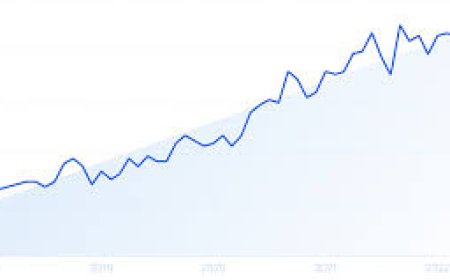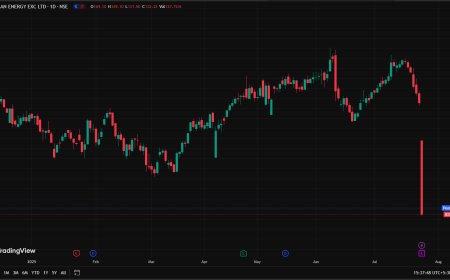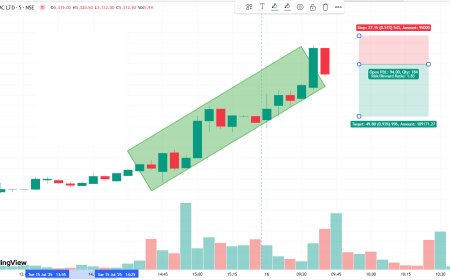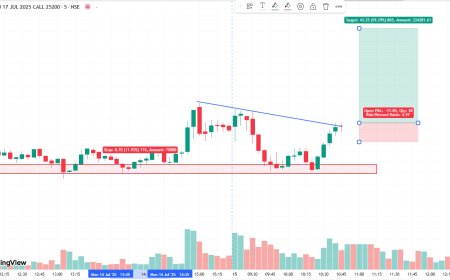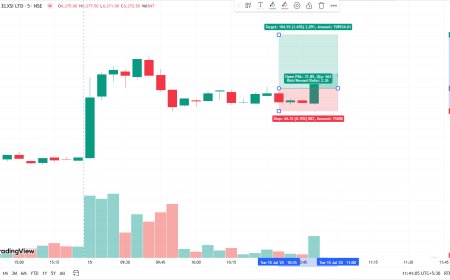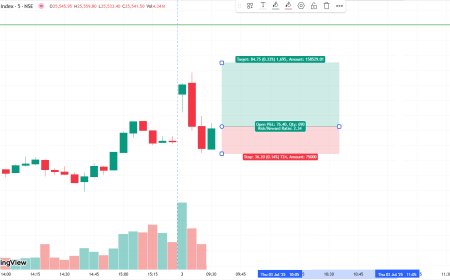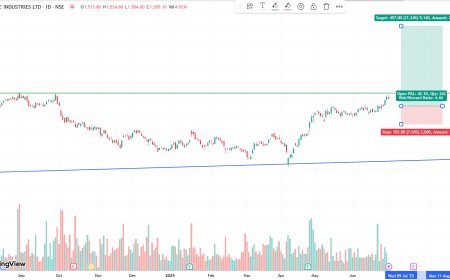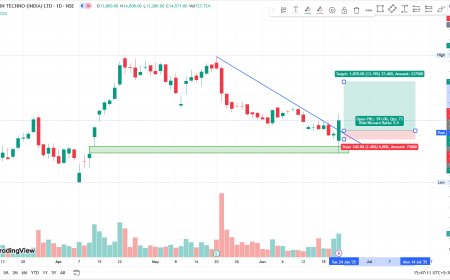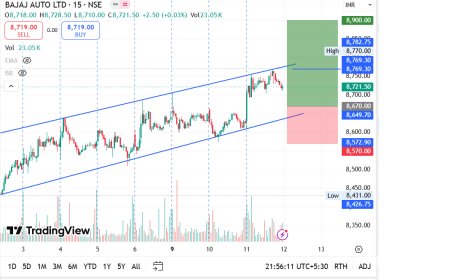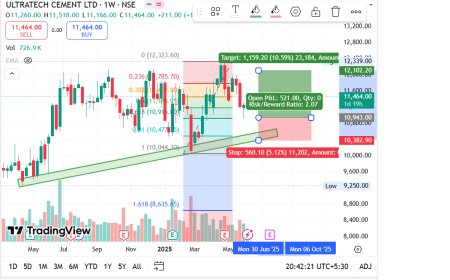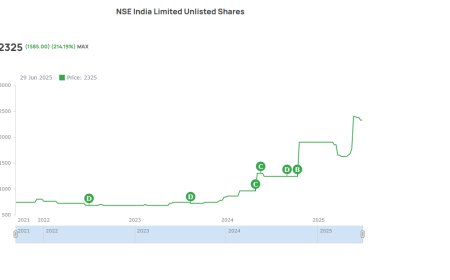Indian Bond Yields Set for an Upside Bias Amidst Global and Domestic Influences
Indian bond yields are showing signs of upward movement due to global rate trends, inflation worries, and domestic supply pressures. Explore what’s driving this trajectory and how it affects the debt market outlook.

Indian Bond Yields Seen Moving With an Upside Bias: What’s Fueling the Rise?
The Indian bond market is at a pivotal moment. With the 10-year benchmark yield hovering around the 7% mark and showing signs of creeping upward, market participants are anticipating an upside bias in yields over the coming months. This shift comes against the backdrop of sticky inflation, robust government borrowing, and global uncertainties that are reshaping yield expectations across emerging markets — and India is no exception.
In this article, we delve deep into the dynamics driving the shift in Indian bond yields, what to expect ahead, and how different segments of the market are preparing for this potential shift.
RBI Holds for Now, But the Market Sees Through the Fog
The Reserve Bank of India (RBI) has so far maintained a neutral-to-cautious stance. In its recent monetary policy review, the central bank chose to hold the repo rate steady at 6.50%, signaling a wait-and-watch approach. However, bond traders and institutional investors are increasingly pricing in the possibility that the RBI might take longer to begin its rate-cutting cycle.
Sticky core inflation, persistent food price pressures, and high crude oil prices have kept inflation expectations elevated. While headline inflation has remained within the RBI's tolerance band, the central bank is reluctant to loosen policy prematurely and risk a resurgence in price pressures.
This cautious stance, even amid global central banks signaling rate cuts, has led to a recalibration in bond yield expectations. The message is clear: a shallow rate cut trajectory, if at all, and possibly a longer period of restrictive monetary policy.
Global Headwinds Add to the Bias
It’s not just domestic inflation that’s keeping yields elevated. Global factors are playing an equally strong role in shaping the bond yield curve.
The US Federal Reserve, while pausing hikes, remains firm in its data-driven approach. With U.S. Treasury yields still elevated — the 10-year yield is hovering near 4.4% — Indian bond yields are adjusting to maintain the yield spread necessary to attract and retain foreign portfolio investment (FPI) inflows.
In an interconnected world, India cannot afford a sharp divergence in yield differentials. Any abrupt drop in the spread could trigger outflows, pressurize the rupee, and create broader macroeconomic stress. Hence, Indian yields are reflecting not just local fundamentals but also external monetary cues.
Government Borrowing: A Key Supply Driver
The Centre’s borrowing programme is another important factor tilting yields upward. For FY26, the government has announced gross borrowing of ₹14.13 lakh crore, a figure that, while slightly lower than FY25, remains historically elevated. This heavy supply of government securities (G-secs) puts upward pressure on yields, particularly in the absence of aggressive demand from institutional players.
Though the RBI has been conducting Open Market Operations (OMOs) to manage liquidity and ensure orderly movement in yields, the sheer size of borrowings means the pressure is likely to persist, especially in the second half of the fiscal year.
State governments are also ramping up their borrowings, adding another layer of supply that the market needs to digest.
Liquidity Tensions and Systemic Trends
Systemic liquidity in the banking system has turned marginally deficit in recent weeks. The RBI’s liquidity absorption operations have mopped up excess cash, and coupled with higher credit offtake, banks are no longer flush with funds.
As liquidity tightens, banks tend to become more selective in their investment strategies. This makes them less aggressive in bidding for long-duration securities, thereby contributing to upward pressure on yields. Additionally, with the expectation of no near-term rate cuts, banks may avoid locking in funds at current levels.
Corporate Bonds and Credit Spreads in Focus
The upside bias in G-sec yields is also being mirrored in the corporate bond market. AAA-rated corporate bonds are seeing yields creep higher, and credit spreads have begun to widen — a sign that investors are demanding a higher risk premium.
For corporates looking to raise funds through debt, the market is turning more expensive. This could influence capital expenditure decisions, especially for companies heavily reliant on debt refinancing.
Market Sentiment: Investor Positioning Shifts to Short and Medium Durations
Fund managers are adjusting their portfolios in line with the new yield reality. There is a clear preference for short-to-medium duration debt funds, which are less sensitive to interest rate fluctuations. Long-duration bond funds have seen tepid inflows due to the uncertainty surrounding the timing of the rate cut cycle.
Moreover, demand for floating rate bonds and inflation-indexed securities is also picking up, reflecting hedging strategies in a rising-yield environment.
FPIs Remain Cautiously Optimistic
Foreign Portfolio Investors have shown renewed interest in Indian debt markets, thanks in part to India's inclusion in the JPMorgan Global Bond Index and the anticipated Bloomberg index addition. However, FPIs are being selective, sticking to the short and medium ends of the curve, while staying away from long-duration bets.
Any delay in rate cuts from global central banks or higher-than-expected U.S. inflation could reverse these inflows, again adding pressure on Indian yields.
What’s the Outlook?
Looking ahead, Indian bond yields are likely to continue exhibiting an upside bias, with the 10-year yield potentially rising to 7.25% or even higher if inflation surprises on the upside or the global rate environment hardens again.
However, any meaningful escalation in geopolitical tensions, crude oil spikes, or stronger-than-expected economic growth could further fuel this movement.
On the flip side, a sharp disinflationary trend or dovish surprises from major global central banks could offer some reprieve, although such scenarios look less probable in the short term.
Key Takeaways
-
Inflation remains the primary concern, keeping RBI in a cautious stance.
-
Global yields are influencing Indian yields, necessitating alignment to retain FPI interest.
-
Government borrowing and tight liquidity are reinforcing the upward pressure.
-
Bond fund managers are shifting strategy, favoring shorter durations.
-
Upside risks to yields are real, with a growing consensus around a delayed easing cycle.
Cautious Optimism or Strategic Repositioning?
For investors, the message is clear — brace for more volatility and be strategic with duration and credit exposures. For issuers, the higher cost of borrowing is a reality that must be factored into financial planning. And for policymakers, the challenge remains to strike a delicate balance between supporting growth and anchoring inflation expectations without destabilizing financial markets.
As India navigates this complex economic environment, bond yields will serve as both a barometer and a guidepost for what lies ahead in the financial landscape.
What's Your Reaction?
 Like
0
Like
0
 Dislike
0
Dislike
0
 Love
0
Love
0
 Funny
0
Funny
0
 Angry
0
Angry
0
 Sad
0
Sad
0
 Wow
0
Wow
0






























